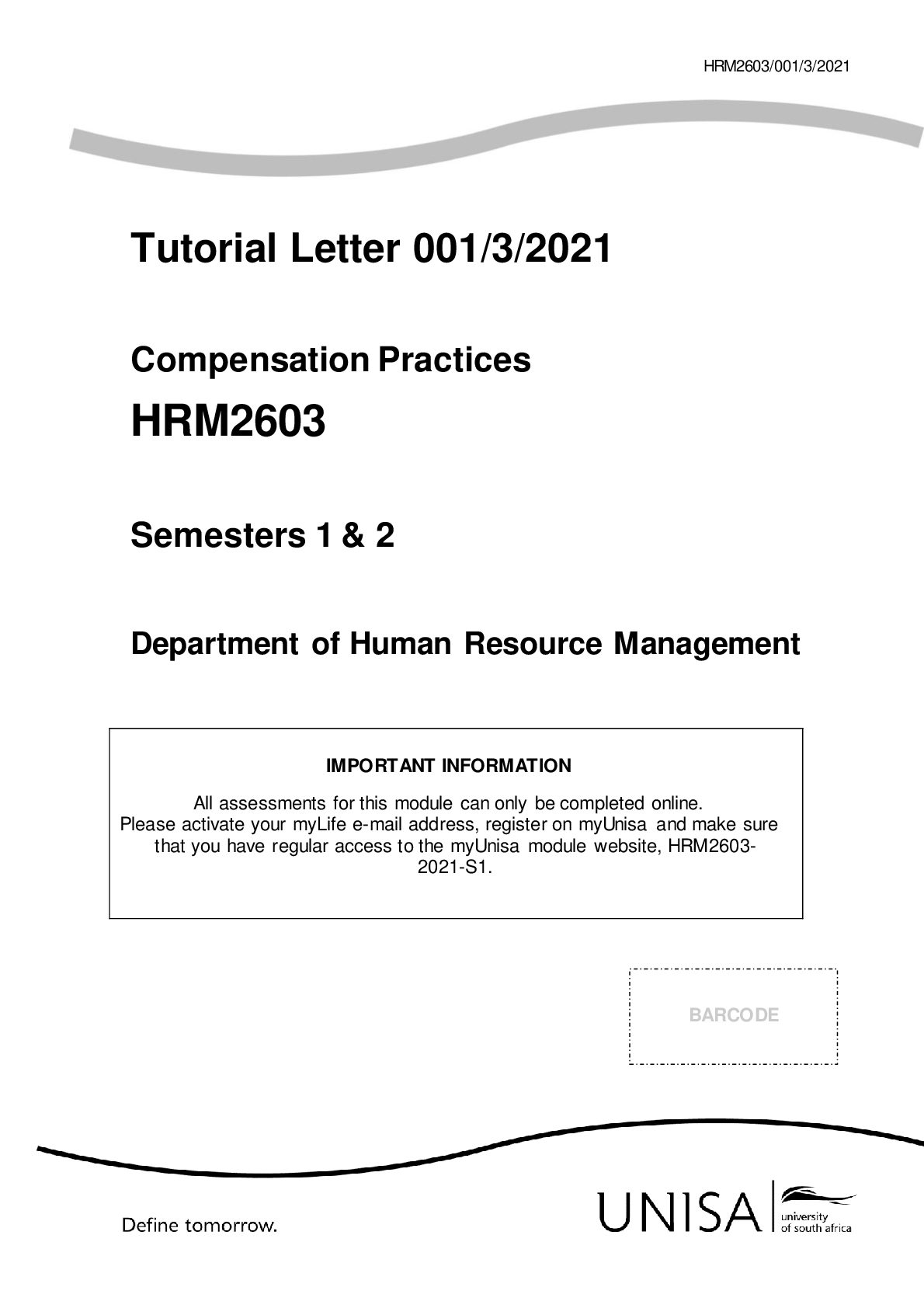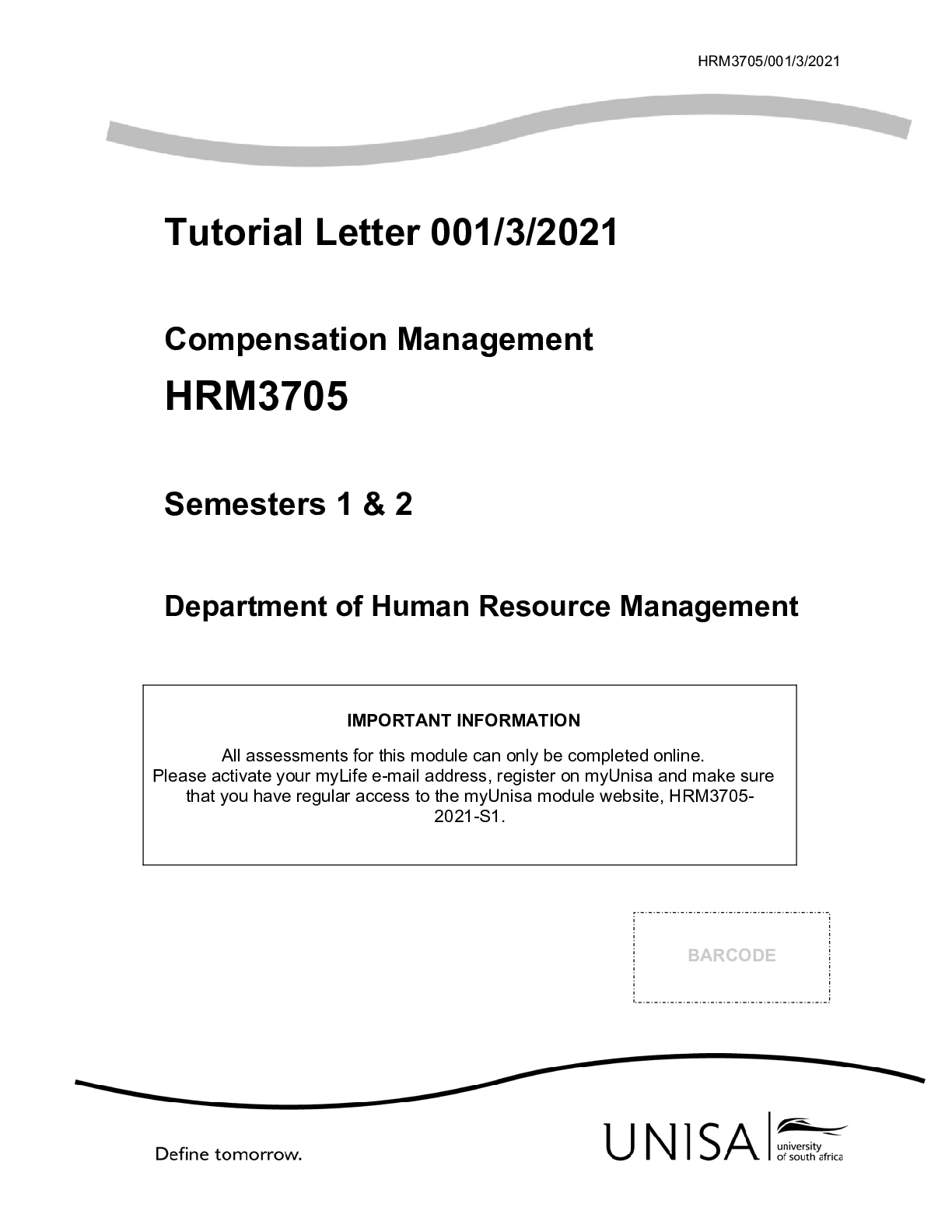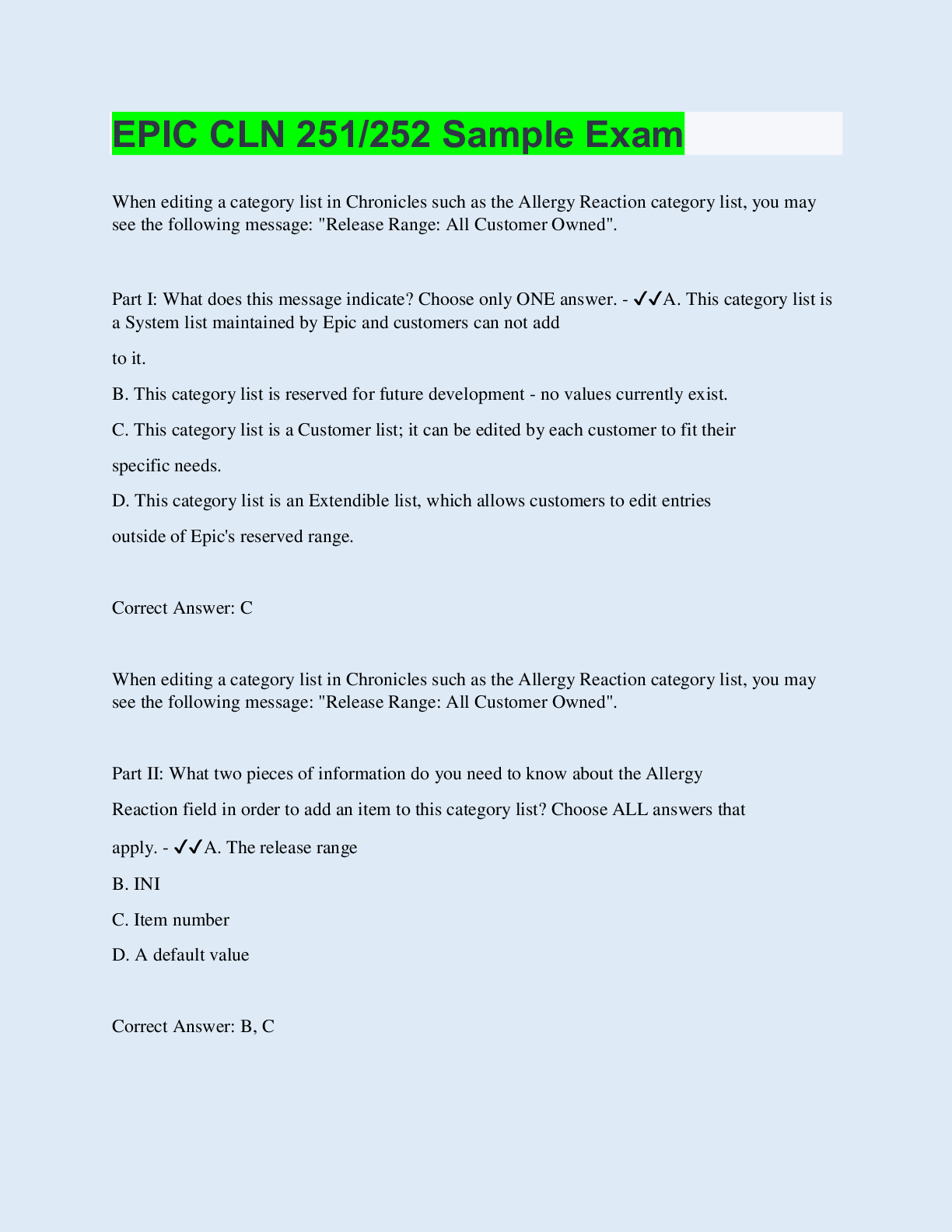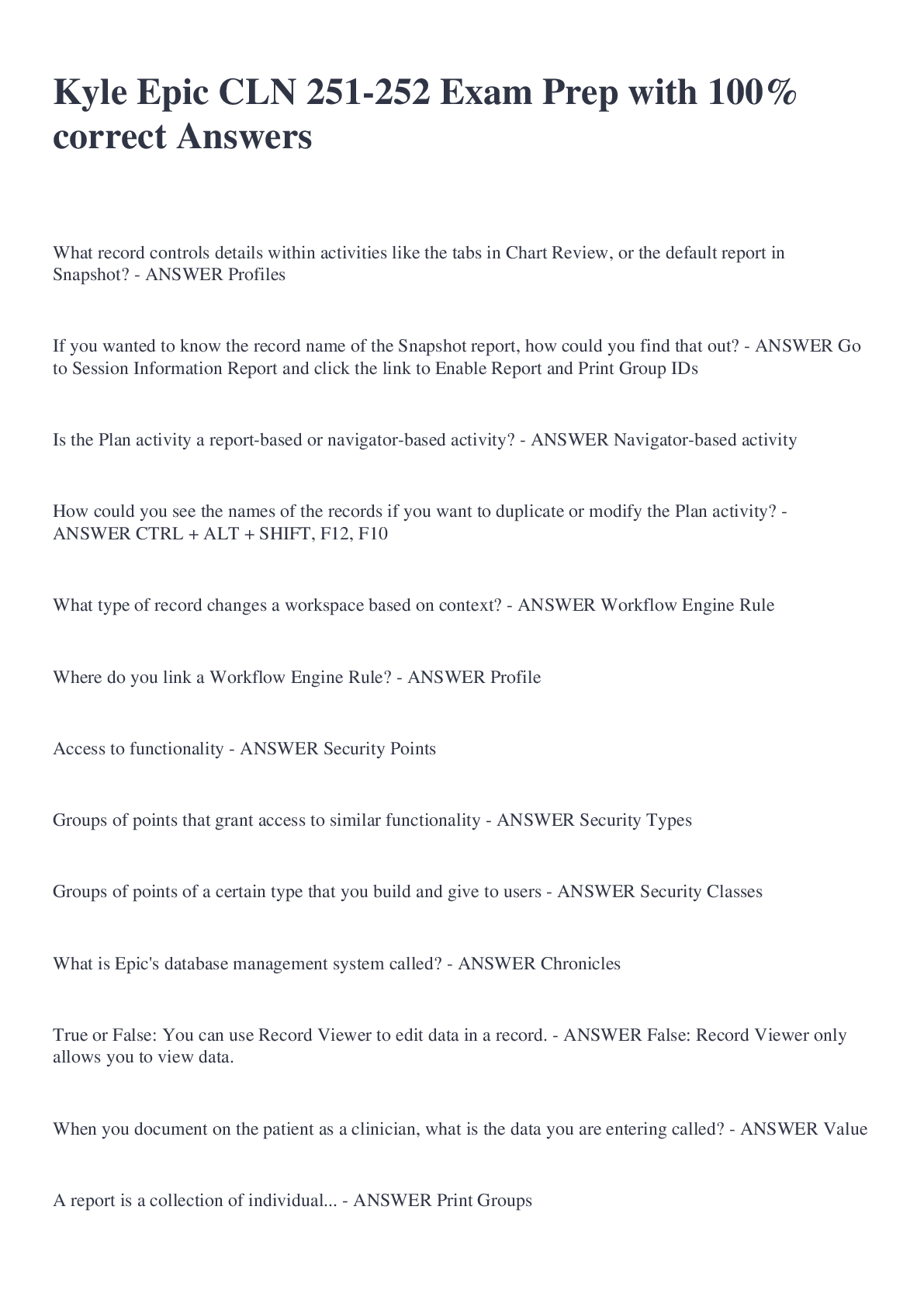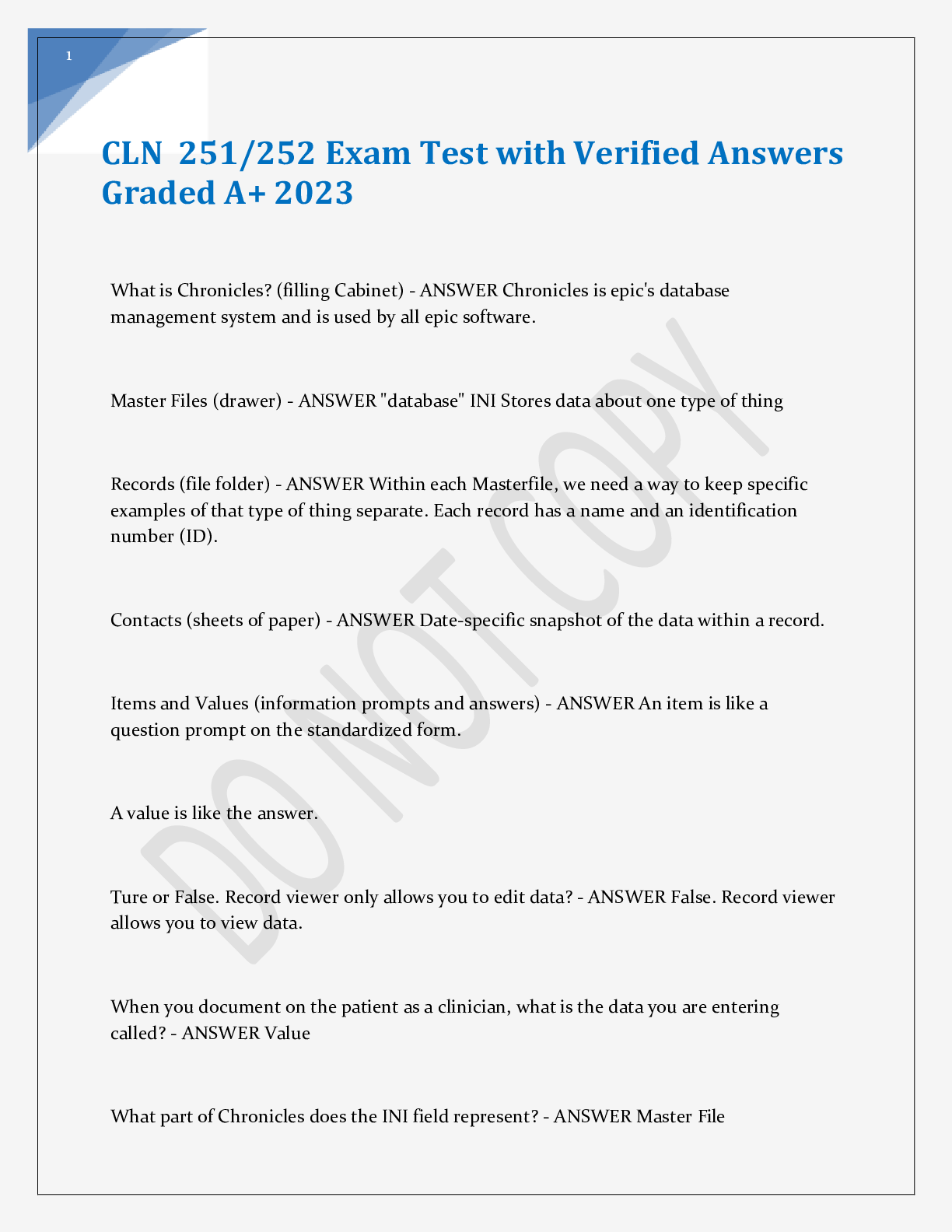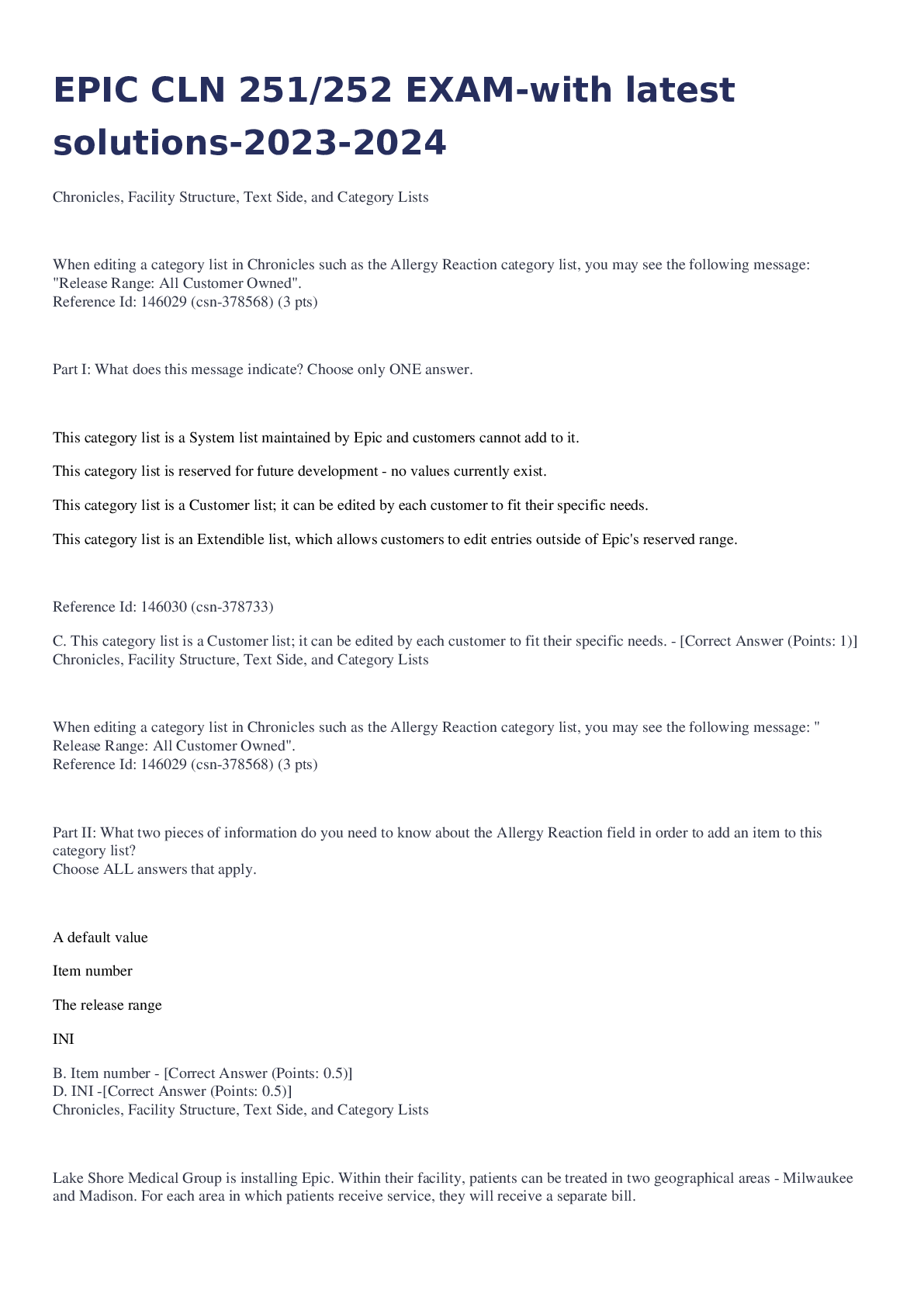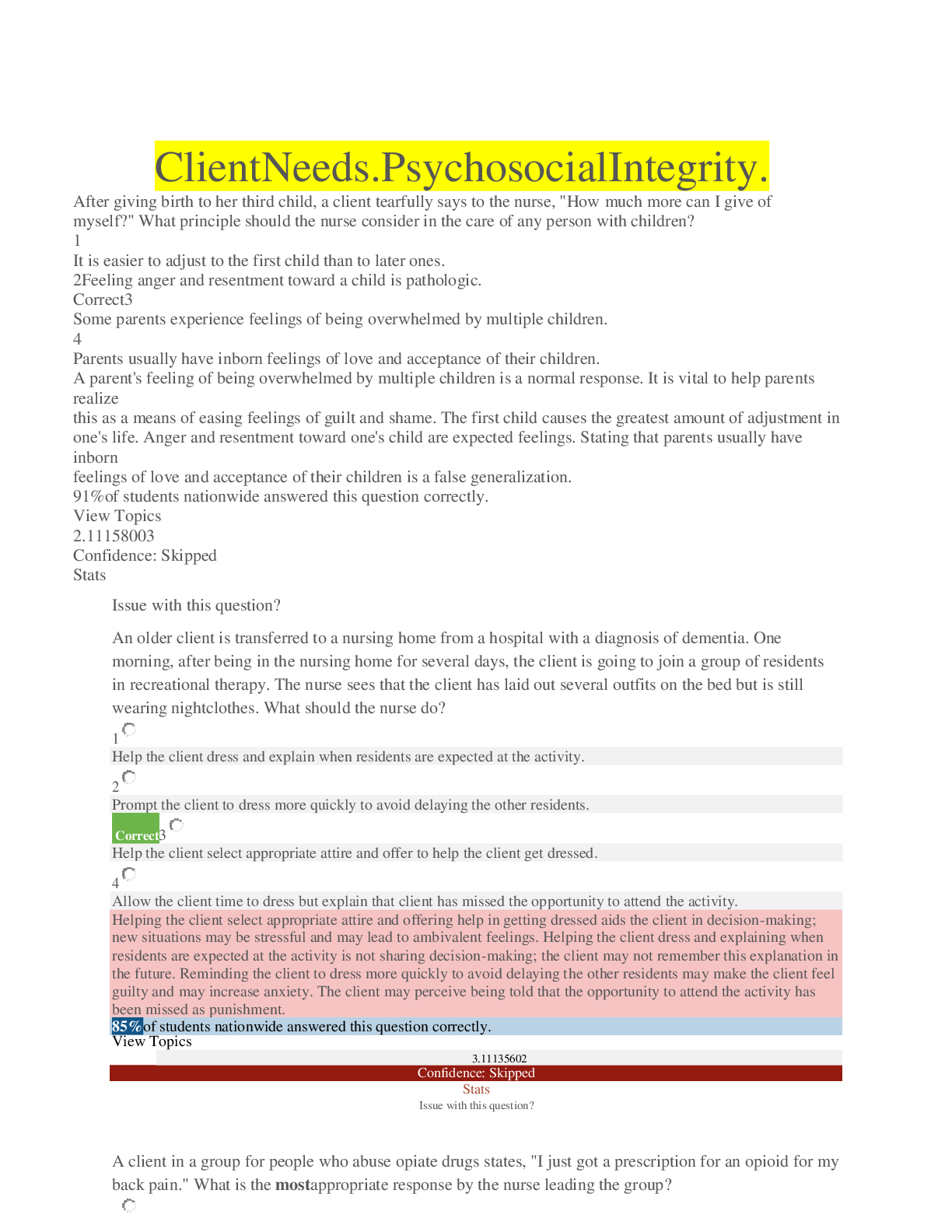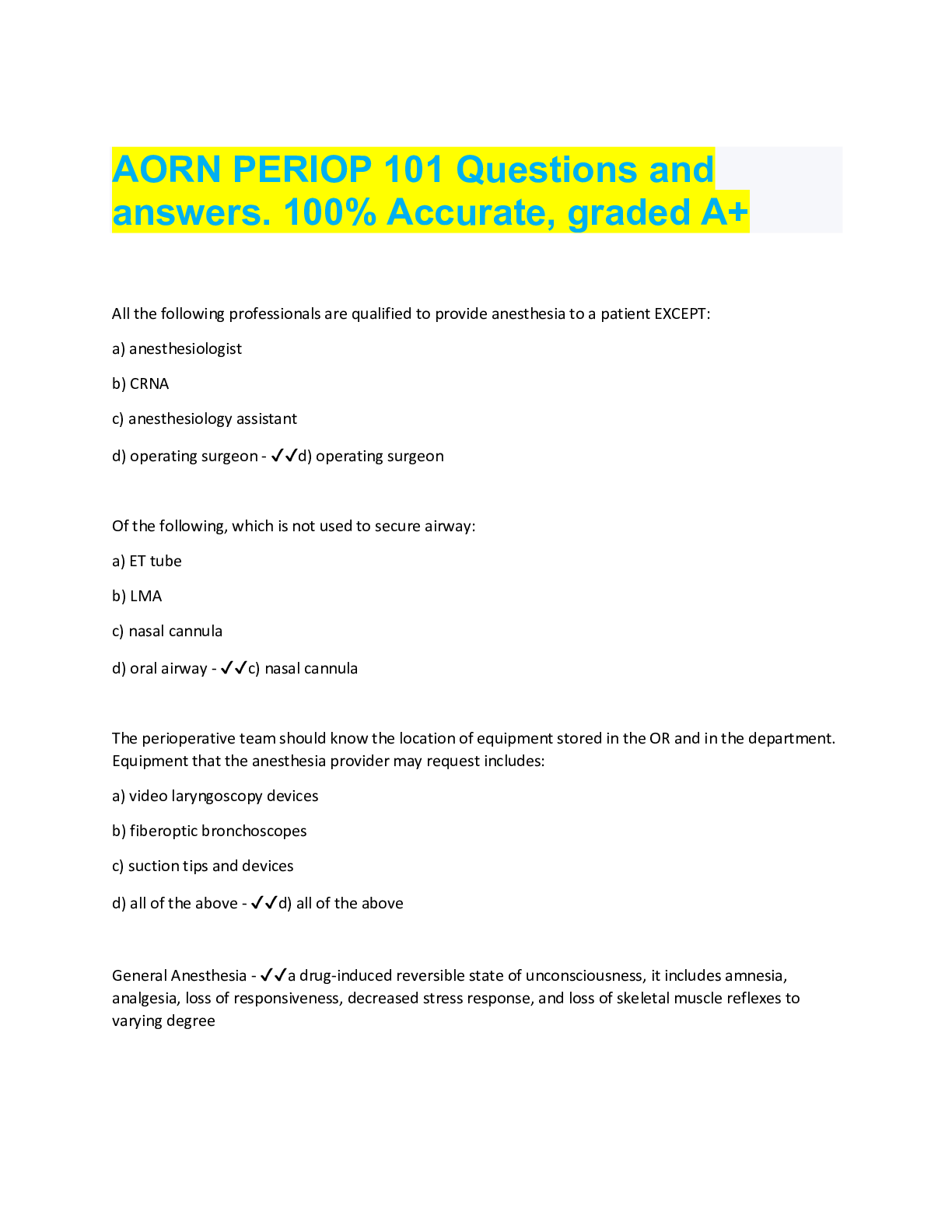NUR 2868 ROLE AND SCOPE_STUDY_GUIDE_FOR_EXAM_2
Document Content and Description Below
R&S EXAM 2 Study Guide – 50 Questions Define critical thinking. What are the steps of this process? Explain what is involved in each step. o Critical thinking is the ability to focus thinking ... to get the needed results in various situations; deliberate, informed thought. purposeful, informed, outcomes focused thinking…[that] applies logic, intuition, creativity and is grounded in specific knowledge, skills, and experience Composite of knowledge, attitudes and skills that yields the ability to assess a situation using open-ended questions about facts/assumptions and use personal judgment and problem-solving to decide how to deal with it. o Steps: (fluid and changing; dynamic) – gathering data, analyzing the data, choosing an action, implementing that action, and evaluating the outcomes of the course of action Describe the value systems of clients. How can nurses best deal with different value systems? o Values affect all aspects of care and as such, the nurse needs to assess what is important to the client (cultural assessment, psychosocial assessment, etc.) and work with the client to integrate this into the plan of care Factors that can help support this: ethical priniciples (autonomy, nonmaleficence, beneficence, veracity, paternalism, respect, justice, and fidelity), institutional policy, personal judgment, trusted co-workers, institutional ethics committees, and legal precedent. Describe the different steps of the nursing process. What is involved in each step? o Assessment – to collect and record data to provide the information needed to: Predict, prevent, detect, manage, and resolve problems, issues, and risks Clarify expected outcomes of care ID individualized interventions to achieve outcomes, promote health, and attain optimum function o Diagnosis/outcome identification – to clarify realistic expected outcomes, and the problems, risks, or issues that must be managed to achieve the outcomes ID s/sx that may indicate need for referral R/O or include suspected problems Decide what need to be managed to obtain outcomes Recognize health states that are satisfactory but could be improved Reflect o Planning – ensure that there’s a comprehensive, recorded, outcome-focused plan that’s tailored to individual patient and circumstances Specify short-term and long-term goals Monitor and manage priority problems, issues, and risks Promote optimum comfort, function, independence, and health Coordinate care and include pts as partners in decision-making and care ID what interventions must be managed by RN and what can be delegated Achieve desired outcomes safely, efficiently, and cost-effectively Include teaching Provide a record that can be used to monitor progress and communicate care o Implementing – put plan into action Assess pt to determine if interventions are appropriate/pt is ready Prioritize, delegate, and coordinate cares Prepare the environment and equipment for safety, comfort, and convenience Perform interventions and reassess Make immediate changes as needed and update plan if needed Record pt data and responses o Evaluating – determine where pt stands in relation to desired outcomes’ consider how process can be improved Assess pt status to determine whether expected outcomes have been met and what factors promoted or inhibited success of plan Plan for ongoing assessment, improvement, and pt independence Discharge pt or modify plan as needed What is the difference between subjective and objective? Give examples of each. o Subjective: based on/influenced by personal feeling, tastes, or opinions The moon is pretty; my pain is at a 7. o Objective: facts that are not influenced by feelings or opinions Earth is a planet; the client has vomited 200cc in the last hour. Review the process on resolving problems. What are the different steps? What is the best approach? o Steps: Define the problem, issue, or situation This study source was downloaded by 100000826082554 from CourseHero.com on 06-20-2021 10:28:33 GMT -05:00 https://www.coursehero.com/file/34007969/Role-and-Scope-Study-Guide-for-Exam-2docx/ This study resource was shared via CourseHero.com R&S EXAM 2 Study Guide – 50 Questions Gather data Analyze the data Develop solutions and options Select a solution with a desired outcome Implement the solution Evaluate the result o TEACH (time (root cause), exposure (learn from others), assistance (members of team investigate), creativity (brainstorm), hit it (implement)) o Best approach: depends on the situation but all data gathered should be accurate, relevant, valid, and timely including both objective and subjective data. What is involved in making a high-quality decision? o The phases of making a high-quality decision include: Defining objectives Generating options Identifying advantages and disadvantages of each option Ranking the options Selecting the option most likely to achieve the predefined objectives Implementing the option, and Evaluating the result. o Achieves predefined goals, objectives, and outcomes What is involved in brainstorming? What is the goal? o Brainstorming involves listing all ideas as stated without critique or discussion. The group leader or facilitator should encourage people to tag onto or spin off ideas from those already suggested. Ideas should not be judged, nor should the relative merits or disadvantages of the ideas be discussed at this time. o GOAL: to generate ideas, no matter how seemingly unrealistic or absurd; the emphasis is on the volume of ideas generated, not necessarily the quality Solutions may be superficial and fail to solve the problem. Group brainstorming also takes longer, and the logistics of getting people together may pose a problem. Define different decision styles (i.e. autocratic, democratic, etc.). Give examples of each o Autocratic: A leader/manager that makes decisions independent of the input or participation of others. This has been referred to as the “decide and announce” approach, an authoritative style; more rapid and appropriate in crisis situations EX: a nurse gives orders about who needs to do CPR during a code o Democratic/Participative: A leader/manager involves the appropriate personnel in the decision-making process Take more time, but are better when there is likely to be conflict, if the problem is unstructured, or if the manager doesn’t have the knowledge/skill to solve the problem EX: involving the interdisciplinary team to make decisions that affect patient care or seeking representation on a task force Define the decision making process. What are the different steps? o Decision making is a purposeful and goal-directed effort that uses a systematic process to choose among options; the identification and selection of options/alternatives. o Steps: See high-quality decision Listing options, identifying the pros and cons of each, ranking them, and selecting the best one What are characteristics of a good nursing decision maker? o Ability to think critically o Self-aware o Reflects on past situations o Creative o Possesses professional judgment o Good communication skills o Conflict resolution and mediation skills o Knowledge of the vagaries of group dynamics o Ability to foster an environment conducive to effective problem solving, decision making, and creative thinking [Show More]
Last updated: 1 year ago
Preview 1 out of 10 pages
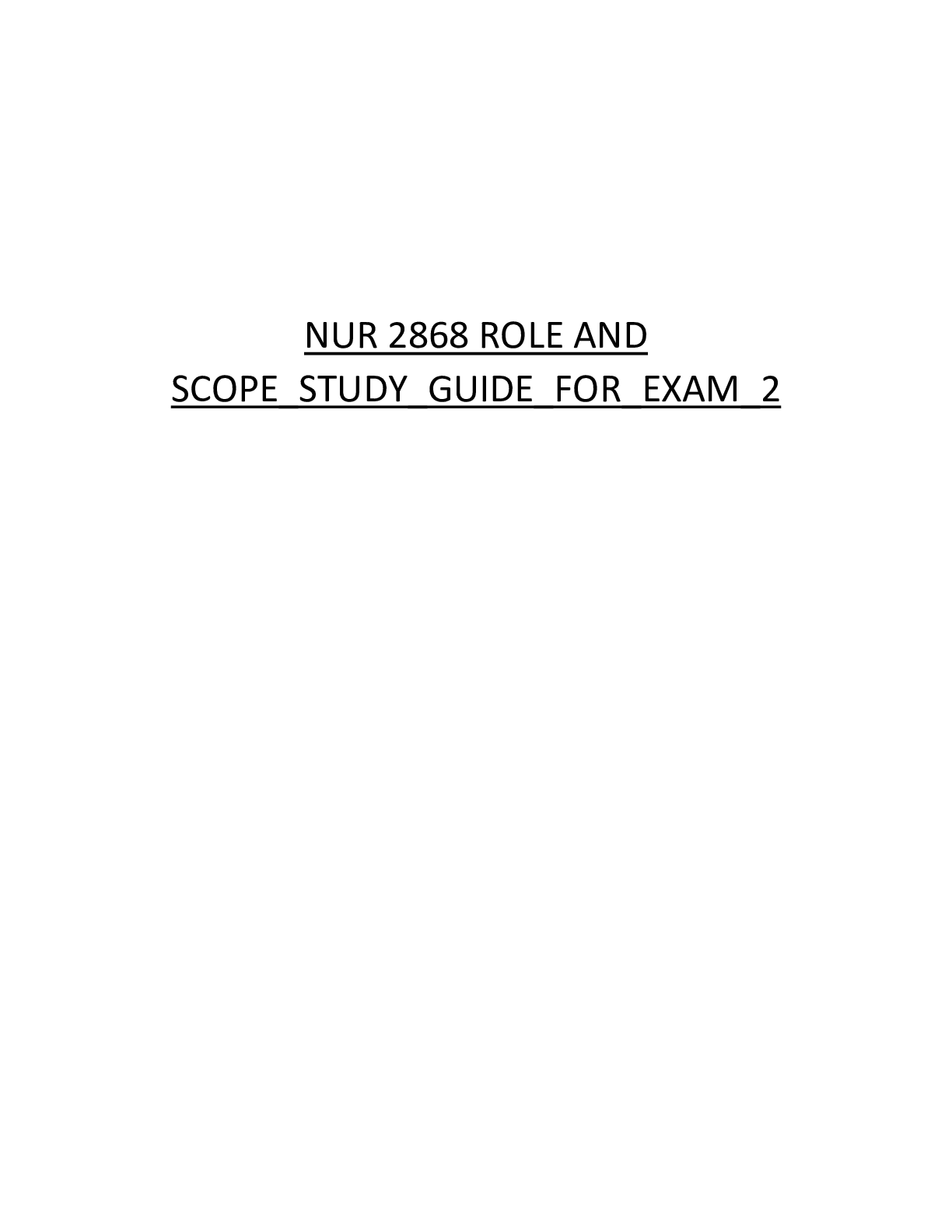
Reviews( 0 )
Document information
Connected school, study & course
About the document
Uploaded On
Jul 03, 2021
Number of pages
10
Written in
Additional information
This document has been written for:
Uploaded
Jul 03, 2021
Downloads
0
Views
37


.png)

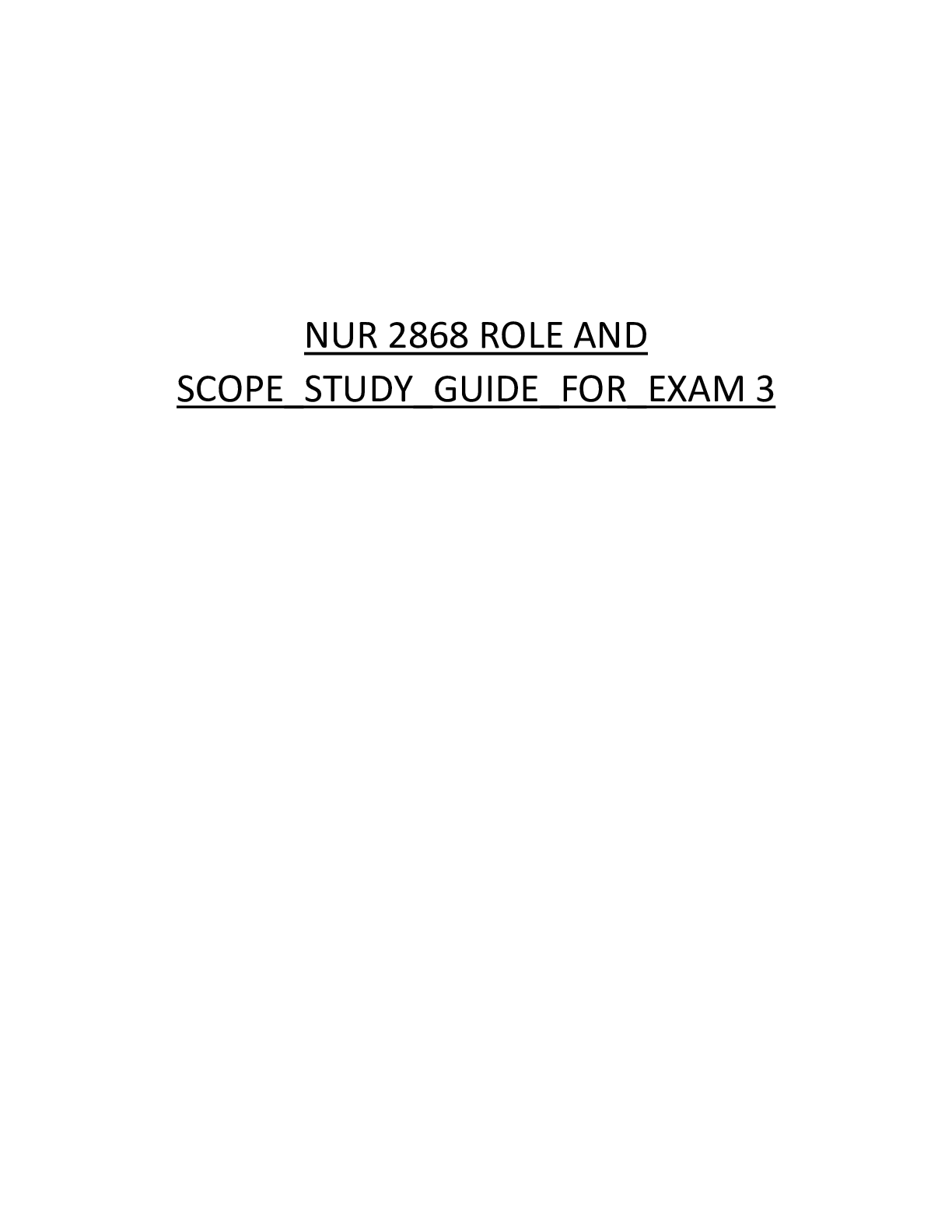

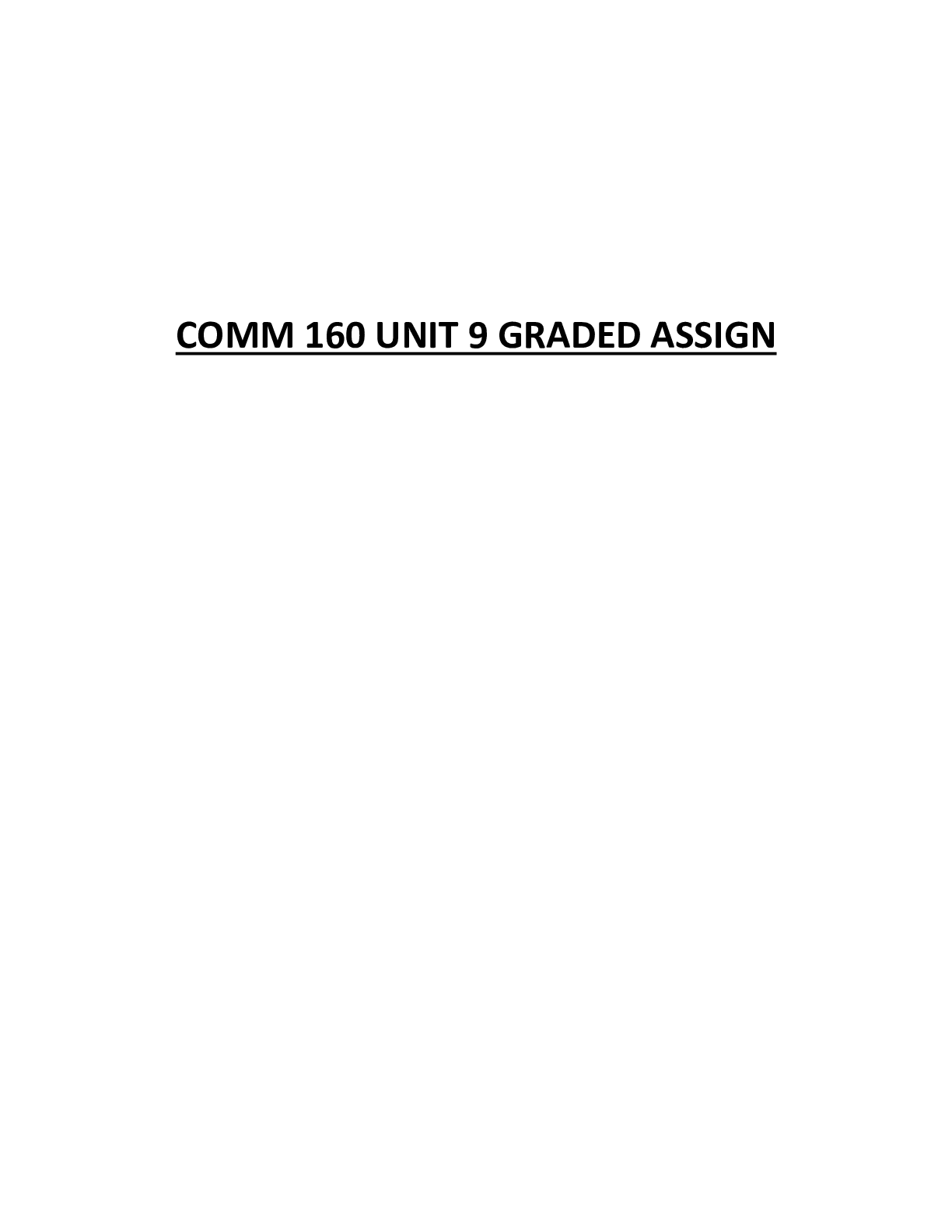
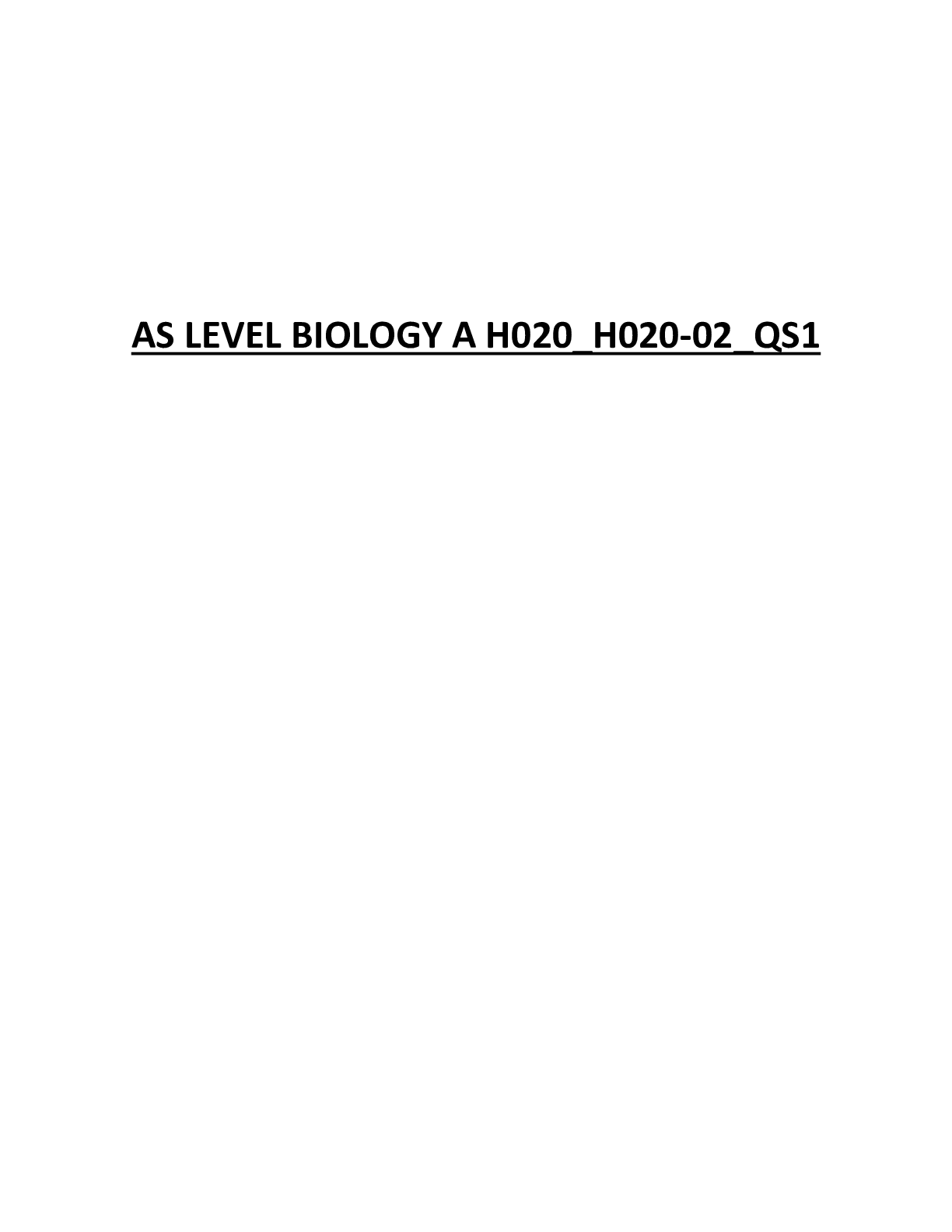
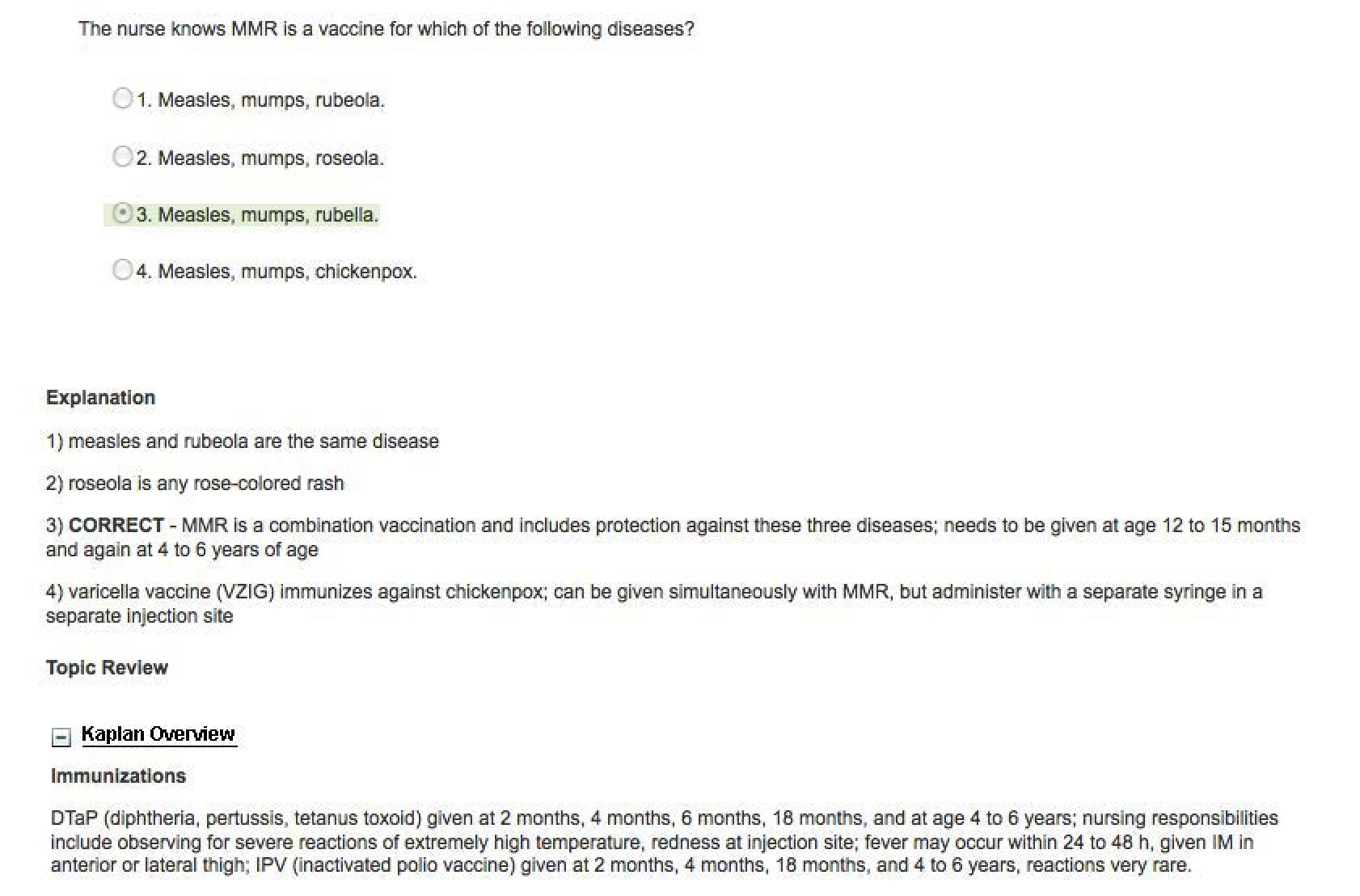
.png)


